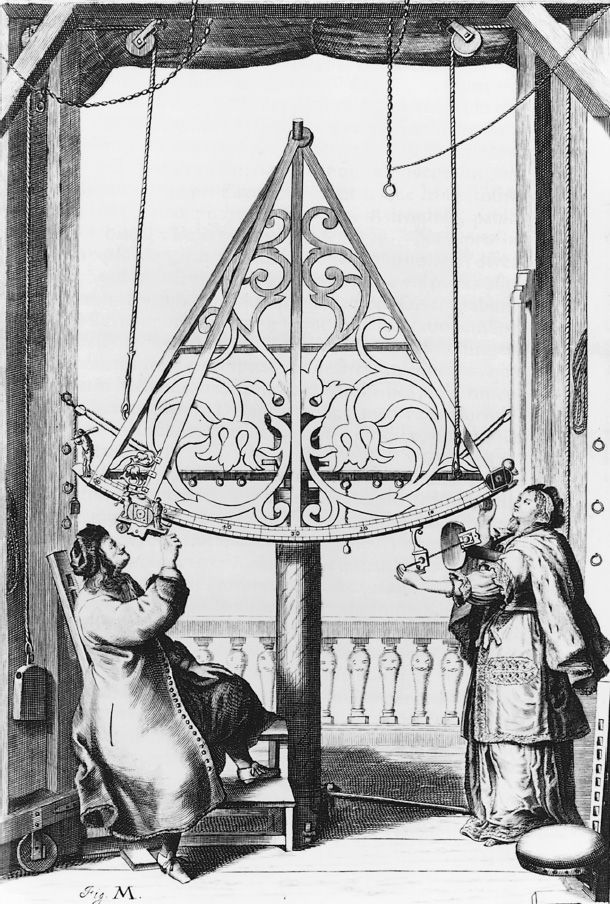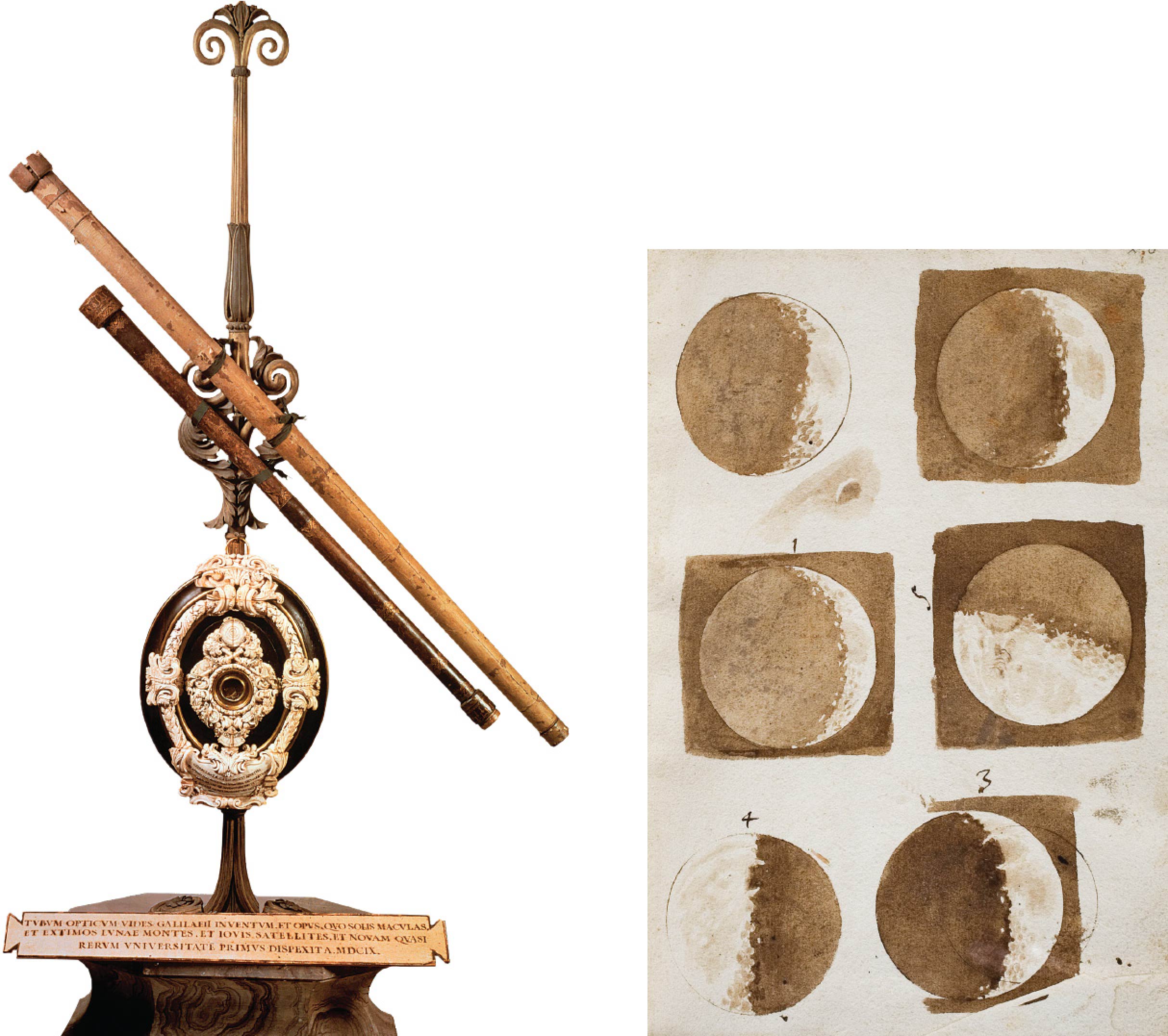A History of Western Society: Printed Page 507
A History of Western Society, Value Edition: Printed Page 521
Brahe, Kepler, and Galileo: Proving Copernicus Right
One astronomer who agreed with Copernicus was Tycho Brahe (TEE-koh BRAH-hee) (1546–1601). Born into a Danish noble family, Brahe became passionately interested in astronomy as a young boy and spent many nights gazing at the skies. Completing his studies abroad and returning to Denmark, he established himself as Europe’s leading astronomer with his detailed observations of the new star of 1572. Aided by generous grants from the king of Denmark, Brahe built the most sophisticated observatory of his day.
Upon the king’s death, Brahe acquired a new patron in the Holy Roman emperor Rudolph II and built a new observatory in Prague. In return for the emperor’s support, he pledged to create new and improved tables of planetary motions, dubbed the Rudolphine Tables. For twenty years Brahe meticulously observed the stars and planets with the naked eye, compiling much more complete and accurate data than ever before. His limited understanding of mathematics and his sudden death in 1601, however, prevented him from making much sense out of his mass of data. Part Ptolemaic, part Copernican, he believed that all the planets except the earth revolved around the sun and that the entire group of sun and planets revolved in turn around the earth-moon system.

It was left to Brahe’s young assistant, Johannes Kepler (1571–1630), to rework Brahe’s mountain of observations. From a minor German noble family, Kepler suffered a bout of smallpox as a small child, leaving him with permanently damaged hands and eyesight. A brilliant mathematician, Kepler was inspired by his belief that the universe was built on mystical mathematical relationships and a musical harmony of the heavenly bodies.
Kepler’s examination of his predecessor’s meticulously recorded findings convinced him that Ptolemy’s astronomy could not explain them. Abandoning the notion of epicycles and deferents — which even Copernicus had retained in part — Kepler developed three new and revolutionary laws of planetary motion. First, largely through observations of the planet Mars, he demonstrated that the orbits of the planets around the sun are elliptical rather than circular. Second, he demonstrated that the planets do not move at a uniform speed in their orbits. When a planet is close to the sun it moves more rapidly, and it slows as it moves farther away from the sun. Kepler published the first two laws in his 1609 book, The New Astronomy, which heralded the arrival of an entirely new theory of the cosmos. In 1619 Kepler put forth his third law: the time a planet takes to make its complete orbit is precisely related to its distance from the sun.
Kepler’s contribution was monumental. Whereas Copernicus had used mathematics to describe planetary movement, Kepler proved mathematically the precise relations of a sun-centered (solar) system. He thus united for the first time the theoretical cosmology of natural philosophy with mathematics. His work demolished the old system of Aristotle and Ptolemy, and with his third law he came close to formulating the idea of universal gravitation (see “Newton’s Synthesis”). In 1627 he also fulfilled Brahe’s pledge by completing the Rudolphine Tables begun so many years earlier. These tables were used by astronomers for many years.
Kepler was a genius with many talents. Beyond his great contribution to astronomy, he pioneered the field of optics. He was the first to explain the role of refraction within the eye in creating vision, and he invented an improved telescope. He was also a great mathematician whose work furnished the basis for integral calculus and advances in geometry.
Kepler was not, however, the consummate modern scientist that these achievements suggest. His duties as court mathematician included casting horoscopes, and he based his own daily life on astrological principles. He also wrote at length on cosmic harmonies and explained, for example, elliptical motion through ideas about the beautiful music created by the combined motion of the planets. Kepler’s fictional account of travel to the moon, written partly to illustrate the idea of a non-earth-centered universe, caused controversy and may have contributed to the arrest and trial of his mother as a witch in 1620. Kepler also suffered deeply as a result of his unorthodox brand of Lutheranism, which led to his rejection by both Lutherans and Catholics. His career exemplifies the complex interweaving of ideas and beliefs in the emerging science of his day.
While Kepler was unraveling planetary motion, a young Florentine named Galileo Galilei (1564–1642) was challenging all the old ideas about motion. Like Kepler and so many early scientists, Galileo was a poor nobleman first marked for a religious career. Instead, his fascination with mathematics led to a professorship in which he examined motion and mechanics in a new way. His great achievement was the elaboration and consolidation of the experimental method. That is, rather than speculate about what might or should happen, Galileo conducted controlled experiments to find out what actually did happen.
In his early experiments, Galileo focused on deficiencies in Aristotle’s theories of motion. He measured the movement of a rolling ball across a surface, repeating the action again and again to verify his results. In his famous acceleration experiment, he showed that a uniform force — in this case, gravity — produced a uniform acceleration. Through another experiment, he formulated the law of inertia. He found that rest was not the natural state of objects. Rather, an object continues in motion forever unless stopped by some external force. His discoveries proved Aristotelian physics wrong.
Galileo then applied the experimental method to astronomy. On hearing details about the invention of the telescope in Holland, Galileo made one for himself and trained it on the heavens. He quickly discovered the first four moons of Jupiter, which clearly suggested that Jupiter could not possibly be embedded in any impenetrable crystal sphere as Aristotle and Ptolemy maintained. This discovery provided new evidence for the Copernican theory, in which Galileo already believed. Galileo then pointed his telescope at the moon. He wrote in 1610 in The Sidereal Messenger: “By the aid of a telescope anyone may behold [the Milky Way] in a manner which so distinctly appeals to the senses that all the disputes which have tormented philosophers through so many ages are exploded by the irrefutable evidence of our eyes, and we are freed from wordy disputes upon the subject.”2 (See “Primary Source 16.1: Galileo Galilei, The Sidereal Messenger.”)

Reading these famous lines, one feels a crucial corner in Western civilization being turned. No longer should one rely on established authority. A new method of learning and investigating was being developed, one that proved useful in any field of inquiry. A historian investigating documents of the past, for example, is not so different from a Galileo studying stars and rolling balls.
In 1597, when Johannes Kepler sent Galileo an early publication defending Copernicus, Galileo replied that it was too dangerous to express his support for heliocentrism publicly. The rising fervor of the Catholic Reformation increased the church’s hostility to such radical ideas, and in 1616 the Holy Office placed the works of Copernicus and his supporters, including Kepler, on a list of books Catholics were forbidden to read. The accompanying decree declared that belief in a heliocentric world was “foolish and absurd, philosophically false and formally heretical.”3
Galileo was a devout Catholic who sincerely believed that his theories did not detract from the perfection of God. Out of caution he silenced his beliefs for several years, until in 1623 he saw new hope with the ascension of Pope Urban VIII, a man sympathetic to developments in the new science. However, Galileo’s 1632 Dialogue on the Two Chief Systems of the World went too far. Published in Italian and widely read, this work openly lampooned the traditional views of Aristotle and Ptolemy and defended those of Copernicus. The papal Inquisition placed Galileo on trial for heresy. Imprisoned and threatened with torture, the aging Galileo recanted, “renouncing and cursing” his Copernican errors.